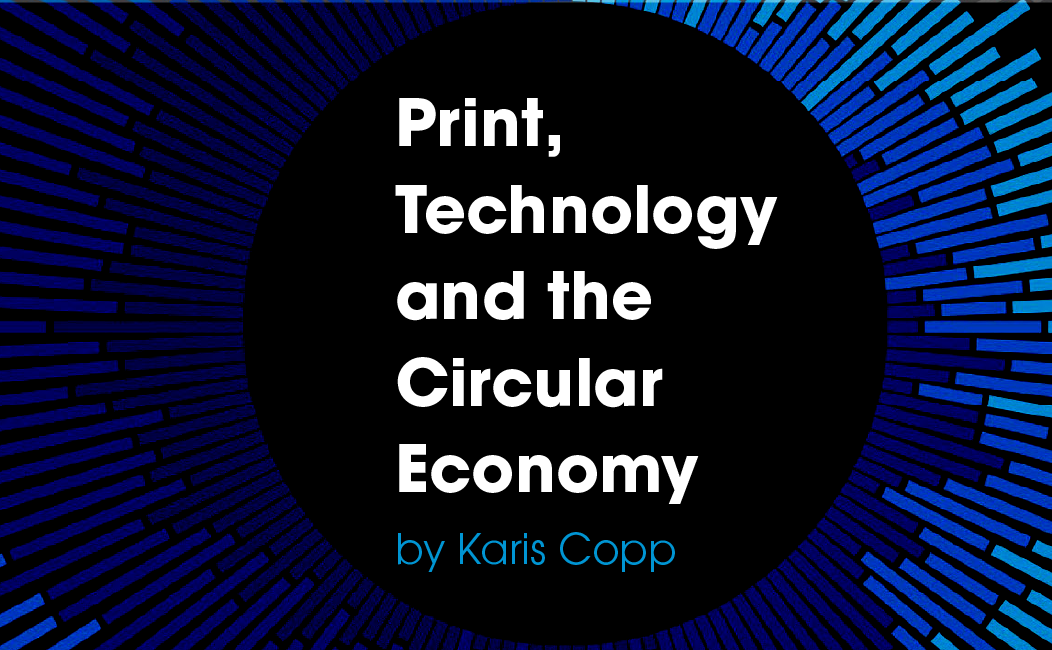At the onset of the COVID-19 pandemic, some lauded a positive of the widespread virus – a win for sustainability, a chance for our natural habitat to ‘heal’ as people stayed home, factories closed their doors, cars stayed off the roads, and flights were grounded.
However, on the other side of the coin, the pandemic is threatening the incredible inroads being made with regards to single-use items as we seek to limit physical interactions with products as much as possible, not to mention widespread supply chain disruption that meant simply getting products on the shelves was the main priority.

By 2019 the conversation around sustainability had gathered immense steam, with aggressive targets being set. Many major retailers, supermarkets, and manufacturers have outlined ambitious plastic and waste elimination goals, and within the print industry, admirable steps have made towards sustainability and zero waste objectives. None of these have been abandoned, but they are likely to be stretched due to the pandemic.
The need for a circular economy, in which we move away from the linear ‘take-make-waste’ model in favour of reusing products and materials is arguably more important than ever, and smart implementation of technology can play a key part. I’ve outlined three areas that can support the print industry in its march towards a more sustainable future.
IoT and Big Data
With a wealth of information being generated by smart sensors and software, we have never had more insight into our production, and the Internet of Things is a huge boon to the print industry’s adoption of circular principles. It allows us to automatically identify maintenance issues and schedule their repair, increasing equipment longevity and maximising efficiency. It also enables the tracking of material flow building a clear, real-time picture of waste, and intelligent data analysis will demonstrate ways to reduce it.
3D Printing
3D printing is a key enabler of the circular economy. Businesses like HP are leveraging their capabilities in this area to embrace reusable principles – on-demand 3D printing of spare parts balances supply and demand, i.e. a part is only manufactured when it is needed, reducing warehousing, inventories, transportation, and eliminating the risk of products being created and never used. Looking towards a more flexible future, we could be designing and creating new parts that help optimise production and reduce waste further.
Cloud Print Management
COVID-19 has made the need for increased flexibility more crucial than ever, and cloud print management is a great tool in achieving this while supporting the effective use of resources. Cloud-based software can provide the quality data you need for intelligent analysis and implementation of waste-reducing measures, as well as keeping track of the sustainability initiatives themselves.
The move towards a circular economy needs to be by design. Think about the life cycle of equipment and products and how to effectively eliminate waste, whether that’s a reduction in ink consumption or paper waste, or optimising labour and reducing avoidable downtime. Smart use of tech is a key driver in a more sustainable, circular future.
 Karis Copp is a UK-based writer, journalist, and communications expert. With a background as an editor and public relations specialist in the print industry, she now works on a freelance basis covering events, writing on industry news and trends, and working with businesses to help them tell their stories and connect with their customers. Follow her on Twitter @KarisCoppMedia.
Karis Copp is a UK-based writer, journalist, and communications expert. With a background as an editor and public relations specialist in the print industry, she now works on a freelance basis covering events, writing on industry news and trends, and working with businesses to help them tell their stories and connect with their customers. Follow her on Twitter @KarisCoppMedia.











